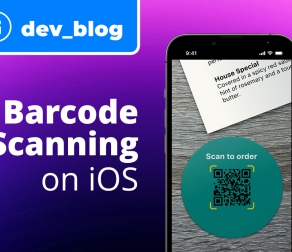Venture capitalists Peter Wagner and Martin Giles coined the term “authentically mobile” to refer to experiences and services that could never have come to fruition without a mobile device (think Snapchat and Pokemon Go). As mobile devices become increasingly integrated into our daily lives, these authentically mobile experiences are becoming more common—and more in demand. Brands that position themselves to deliver authentic, native mobile experiences in 2017 are positioning themselves to deliver exactly what consumers want.
Brands like Ikea, L’Oreal and McDonald’s have seen amazing results from their mobile-first strategies and continue implementing innovative ways to engage their audiences. Ikea uses augmented reality to help shoppers visualize how items would look in their home. L’Oreal uses advanced facial mapping technology to turn customer smartphones into a virtual mirror so they can “try on” various beauty products before making a purchase. And McDonald’s recently used geolocation functionality by sponsoring a Pokestop at the height of the Pokemon Go craze. Combined with new ways to capture, process and analyze data, these authentically mobile technologies don’t only deliver the experience users want—they help brands keep improving their products, solutions and services.
Let’s take a look at some of the other “authentically mobile” trends that will shape 2017 and influence which brands come out on top.
Apps Continue to Bring Home the Bacon
Back in 2014, Gartner predicted over 268 billion app downloads generating approximately $77 billion in revenue for the year 2017. And market researcher App Annie projects that by 2020, gross revenue across all app stores could exceed $101 billion.
While some sources have warned against the death of the app, it’s clear that apps—and app revenue—aren’t going anywhere anytime soon.
Video is on the Rise
Mobile video has grown faster and bigger than expected! Variety notes that today, more than half of all video viewing is happening on mobile, representing a whopping 233% increase since Q3 2013.
Of course, the growth of mobile video wouldn’t be possible without the growth of data usage. Initiatives like T-Mobile’s Binge On are doing away with mobile data limits for streaming video so users can binge to their hearts’ content. Good thing, because 70% of Americans (and over 80% of Millennials!) are binge watching, according to Deloitte’s 10th Digital Democracy Survey.
The rise of video autoplay is another signal that video will be a force to reckon with in 2017. Apps like Facebook now start playing videos instantaneously—no play button clicking required. Although video autoplay is still in its infancy, it’s clear that companies are eager to to remove obstacles to higher data usage so video, the new king of content, can reign supreme.
Location Tech Makes Mobile Smarter
GPS and beacon technologies continue to evolve and will invade diverse industry segments in 2017. Last November, to coincide with the eagerly anticipated reboot of the TV show Gilmore Girls on Netflix, Connecticut’s board of tourism launched a major marketing campaign with a “selfie map tour,” successfully integrating social media with location-based mobile tech. This year, we’ll see more examples of how location-based solutions can replicate the successes that the retail sector has already seen. Retailers like Macy’s and GameStop have already undertaken high-profile experiments with location-triggered messaging, and brands in the personal care space, like Nivea, have even begun to add location awareness to their apps.
As location technology continues to proliferate and become more sophisticated (see: the advent of virtual beacons), we can expect additional industries to start leveraging the power of location to engage users.
Mobile UX Design in 2017
User experience is one of the major driving forces in the mobile space. Today, brands must focus on providing users with visually appealing apps. In 2017 we’ll see more creative mobile design elements, like splash screens, parallax graphics, split screens, micro interactions and grid-based design. But the best UX design must integrate with technology that creates a seamless, intuitive, and enjoyable experience for users. That’s why many brands are demanding custom design services and working with UX design expert partners to create a distinctive look and feel for their mobile solutions complemented by back-end technology that powers the UX flow.
Security and Privacy
Despite sensational headlines about information security and hacking, consumers express ongoing concerns about their privacy but do not always act on those concerns. According to 2016 findings from AARP, nearly 30% of US adults access the internet via public Wi-Fi once a week or more—even though only 4.8% rate public Wi-Fi as “very safe” (with another 39.1% giving it a tepid “somewhat safe” grade).
This isn’t to say Americans are reckless with their privacy online, however. A recent McKinsey survey of car buyers and users of shared-mobility services showed that Americans are more sensitive about their data sharing when compared to their Chinese or German counterparts. But for all locations, users were increasingly willing to share their personal data if they saw value in return.
The main takeaway: as long as users get something significant in return (Wi-Fi access, an app that provides tons of utility, customized notifications and promotions, etc.), they are willing to share their data. To learn more, download our eBook, Mobile Data: The Missing Link in Your User Acquisition and Engagement Strategies.
Something for Everyone: SMB Mobile Adoption
The introduction of standalone app modules and template-like app framework structures now provides quick, effective and budget-friendly ways for small businesses to launch their own mobile strategies. That’s one reason small business trend forecasters now estimate nearly half of small businesses will have a mobile app by 2017. More affordable pricing and increasing competitive pressure are sure to encourage small businesses to incorporate mobile into their marketing initiatives as one of their top New Year’s resolutions.
Brands are aware of what we expect as consumers. In 2017 they just need to exceed all our expectations and use the power of mobile to really wow us.
Consumers have already shown a clear preference for accessing the internet via mobile devices rather than desktop computers, and in 2016 mobile internet consumption increased around 28%. Brands that launched mobile-first initiatives must now focus on authentically mobile experiences, which don’t merely prioritize mobile over desktop experiences, but go above and beyond to harness the characteristics and technology unique to mobile devices to deliver something truly new and awe-inspiring.
As for brands who have yet to dip a toe into mobile? Well, the timing couldn’t be better.











I couldn’t agree more that video is the next big thing and is already becoming very popular. Security has become the biggest issue now and people are becoming more aware of it, so yeah mobile security will take a precedence soon enough. SMBs are more business oriented and what I want to see is how in the future they make it more average user friendly, because that’s where the money is.
Every year more consumers use mobile devices and I think this trend will continue to grow. As mentioned mobile data plans are also increasing along with developments such as 4G which make watching videos that much better.